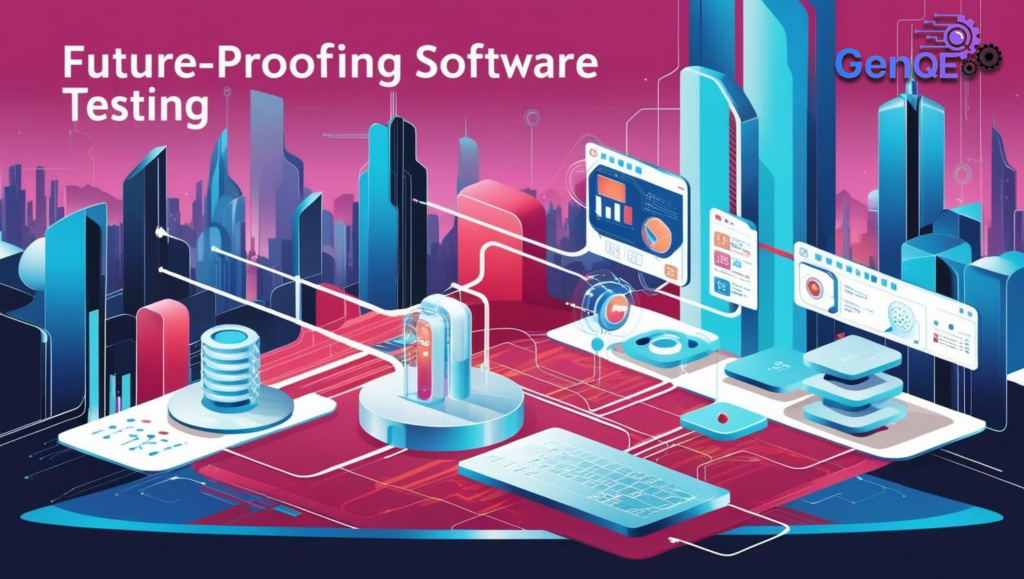
Introduction
The digital landscape is evolving rapidly, with groundbreaking technologies such as Artificial Intelligence (AI), the Internet of Things (IoT), and Edge Computing revolutionizing the way software applications are developed and deployed. As businesses embrace these advancements, software testing methodologies must also evolve to ensure quality, security, and scalability. Traditional testing strategies may no longer be sufficient in addressing the unique challenges presented by these emerging technologies.
This article explores the impact of AI, IoT, and Edge Computing on software testing and how modern testing strategies must adapt to maintain efficiency and reliability. From AI-driven automation to real-time validation of IoT ecosystems and security measures for edge devices, the future of software testing requires a proactive and innovative approach.
AI in Software Testing
Challenges in AI-Driven Applications
Artificial Intelligence is becoming a central component of many modern applications, from machine learning models in finance and healthcare to AI-powered chatbots and recommendation engines. However, testing AI applications presents unique challenges:
- Unpredictable Behavior: AI-driven applications learn and adapt over time, leading to unpredictable outputs that require continuous validation.
- Explainability and Bias Detection: AI models must be tested for fairness, ensuring that biases in training data do not lead to unethical outcomes.
- Dynamic Data Handling: AI applications often rely on vast amounts of real-time data, requiring continuous monitoring and validation.
Strategies for AI Testing
- Automated Model Validation: Using AI-powered testing tools to assess model accuracy and consistency over time.
- Bias and Fairness Audits: Employing techniques such as adversarial testing and bias detection frameworks.
- Regression Testing for AI Models: Ensuring that model updates do not negatively impact existing functionality.
- Performance and Scalability Testing: Evaluating how AI applications perform under various workloads and data conditions.
IoT Testing: Ensuring Reliability in a Connected World
Challenges in IoT Testing
The Internet of Things (IoT) has expanded rapidly, connecting billions of devices across industries such as healthcare, manufacturing, and smart homes. Testing IoT ecosystems introduces several complexities:
- Device Heterogeneity: IoT ecosystems consist of diverse hardware and software components that must function seamlessly together.
- Connectivity Issues: Variability in network conditions can impact the performance of IoT devices.
- Security Risks: IoT devices are often targeted by cyberattacks, making security testing essential.
- Real-Time Data Processing: IoT devices generate massive amounts of data that must be processed efficiently.
Strategies for IoT Testing
- Interoperability Testing: Ensuring seamless communication between different IoT devices and platforms.
- Security Testing: Conducting penetration tests and vulnerability assessments for IoT firmware and APIs.
- Network Simulation: Testing IoT applications under various network conditions, including low bandwidth and latency.
- Data Integrity Validation: Ensuring that IoT data is accurately captured, processed, and stored.
Edge Computing Testing: Bringing Quality Assurance to the Edge
Challenges in Edge Computing Testing
Edge Computing allows data to be processed closer to the source rather than relying on centralized cloud servers. While this improves performance and reduces latency, it also introduces new testing challenges:
- Distributed Architectures: Edge computing systems involve multiple distributed nodes that must function cohesively.
- Security Risks at the Edge: Data stored and processed on edge devices is vulnerable to breaches.
- Limited Processing Power: Edge devices often have constrained computational resources, requiring efficient testing strategies.
- Offline Functionality: Some edge applications must operate with limited or no internet connectivity, requiring extensive offline testing.
Strategies for Edge Computing Testing
- Latency and Performance Testing: Ensuring that edge applications respond quickly to real-time data inputs.
- Security Audits for Edge Devices: Implementing encryption and access control mechanisms to secure sensitive data.
- Failure Recovery Testing: Simulating power outages and network disruptions to validate system resilience.
- Distributed Load Testing: Evaluating how edge applications handle large-scale data processing across multiple nodes.
The Future of Software Testing: Emerging Trends
As AI, IoT, and Edge Computing continue to evolve, software testing methodologies must adapt to keep pace. Some of the emerging trends shaping the future of testing include:
- AI-Driven Test Automation: AI-powered tools will play a larger role in self-healing test scripts, automated defect detection, and intelligent test generation.
- Digital Twin Testing: Virtual models of physical systems will be used to simulate real-world testing environments, particularly for IoT and edge applications.
- Zero Trust Security Testing: Security testing frameworks will shift towards Zero Trust architectures to protect AI models and edge devices from cyber threats.
- 5G-Enabled Testing: With the adoption of 5G networks, performance testing strategies will need to validate ultra-low latency and high-speed data transmission.
- Self-Adaptive Test Environments: Testing platforms will become more adaptive, dynamically adjusting test cases based on real-time changes in application behavior.
Conclusion
Software testing is entering an era of transformation, driven by AI, IoT, and Edge Computing. Traditional testing approaches must evolve to accommodate the complexities of these emerging technologies. Organizations that embrace AI-driven automation, security-first testing methodologies, and real-time monitoring solutions will be better equipped to ensure software quality in a rapidly changing digital landscape.
By adopting modern testing strategies, businesses can future-proof their applications, reduce risks, and deliver high-performance, secure, and reliable software solutions to meet the growing demands of users and enterprises worldwide.